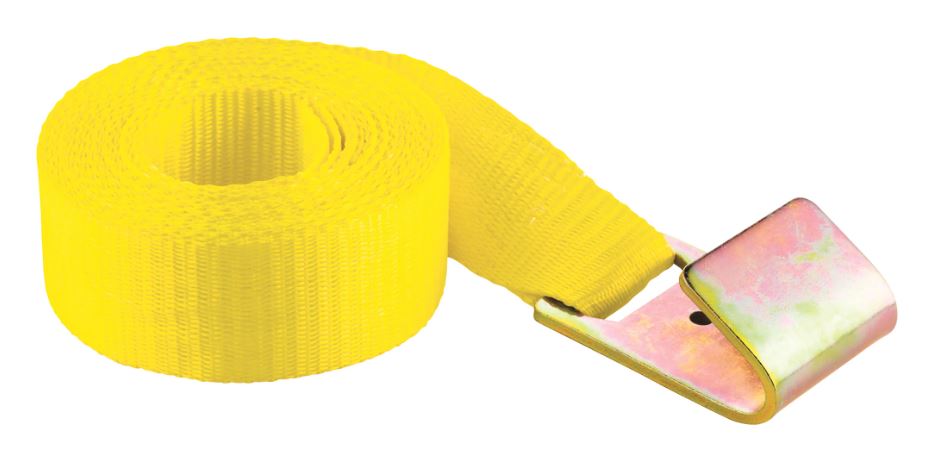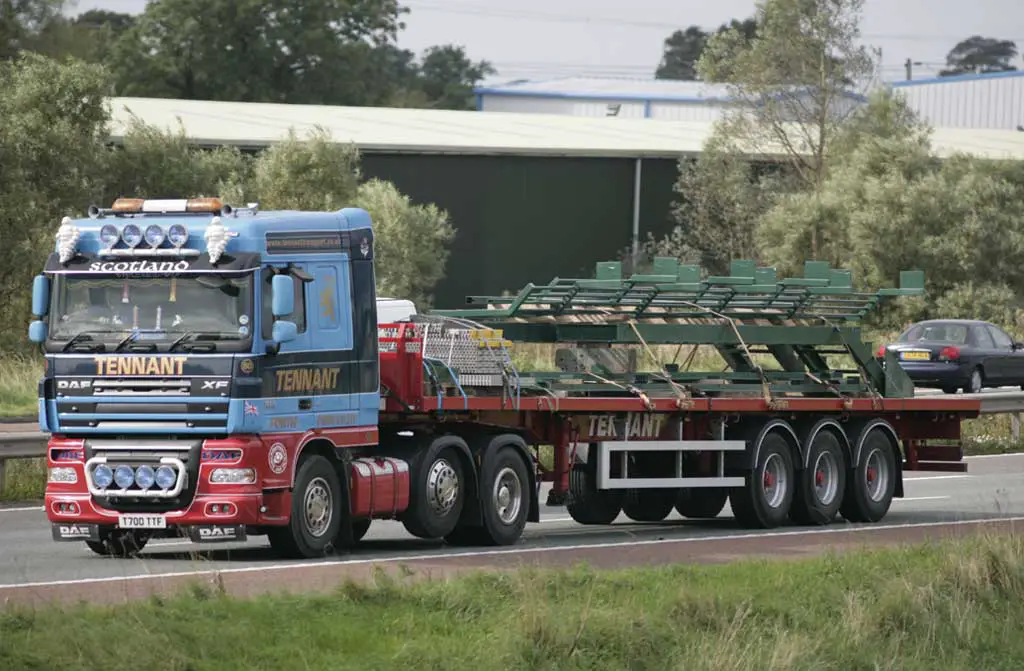Winch straps are extremely useful for securing large and heavy loads, and knowing how to use a winch strap is important to the safety of you and your cargo.
In this guide, we’ll cover everything there is to know about winch straps and how to use them, along with some tips that will make it easy.
What Is A Winch Strap?

Before we cover how to use a winch strap, let’s first explain what it is.
Some people confuse winch straps with recovery straps or snatch straps.
These are two very different things!
A winch strap is used for securing large cargo, usually on flatbed trailers.
It is pulled very tightly to the trailer frame, using tension to hold the cargo in place.
Winch straps are usually 2″ to 4″ wide and 27′ to 30′ long.
You can think of a these straps like heavy duty, oversized ratchet straps.
These are different from recovery straps or snatch straps, which are used to pull things like vehicles out using a winch.
Winch Strap Benefits

Winch straps have some key benefits over other cargo securing options:
Durable: Winch straps are usually made of polyester webbing, which can stand up to sharp edges of cargo and can handle lots of varying weather.
Soft And Lightweight: The polyester webbing is very soft and forgiving against the edges of cargo, so you don’t have to worry as much about damaging anything you may be hauling.
The same can’t be said for chains or wires.
Affordable: Winch straps are significantly cheaper than chains, wire rope, or any other option available.
They also don’t use any tie-down hardware, making them more cost effective.
Flexible: Their flexibility makes them great for securing oddly-shaped cargo.
Easy To Use: There’s no complex systems or knots to learn when using winch straps, as we’ll show you in the next section.
How To Use A Winch Strap
Using a winch strap is an extremely simple process, which is one of the reasons they’re so popular.
Here’s how to use one:
Step 1: Attach The Strap Hook
The end of your winch strap will come with a flat hook or regular hook.
Attach this hook to a D-ring, side rail, or somewhere on the trailer frame where it can “grab on”.
Some people like to loop it through certain spots to make sure the strap doesn’t move.
Step 2: Position The Strap Around Your Cargo
Loop the strap over the bed of the trailer, being sure to position your strap so it holds down your cargo properly.
Now is a good time to make sure you’ve loaded your trailer properly and positioned the weight on the axles the right way.
Step 3: Feed The Winch Strap Into The Winch
Feed the free end of the winch strap into the winch mechanism, pulling the excess slack through.
Some winches are bolted on to the frame, others are mounted permanently on sliding rails, and there are also portable winches that you can put in a stake pocket on your trailer.
Step 4: Double Check Your Strap Placement
Take a look at how the strap is positioned on your cargo, and make any final adjustments before tightening everything up.
Be careful to not have the winch strap over any extremely sharp corners of your cargo or any other spots that could cause damage.
The same goes for fragile items and the pressure the winch straps will apply on them!
Step 5: Tighten The Winch Strap
Most winches will have either a ratchet that you can pump by hand or using a winch bar, depending on the winch tightening mechanism you’re dealing with.
Here’s a great video that puts the whole process together in just a few minutes:
Step 6: At Your Destination
Once you’ve gotten the load there, you’ll need to pack up your winch straps, which can be done by hand or by using a winch winder.
A winch strap winder is a simple device that clamps on to the flatbed trailer.

You feed one end of the winch strap through and simply crank the handle, and you’re left with a winch strap that is rolled up neat and tidy for next time.
When Is It Best To Use A Winch Strap?
Winch straps are most popular with flatbed trailers.


